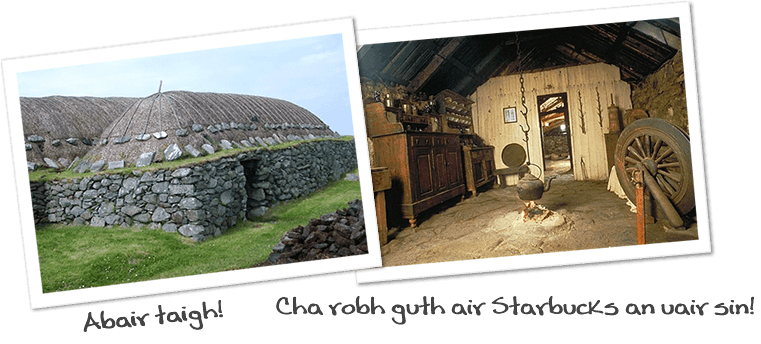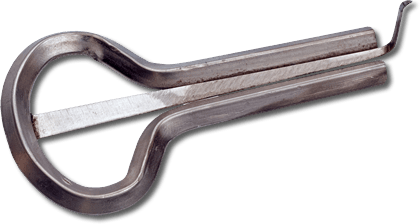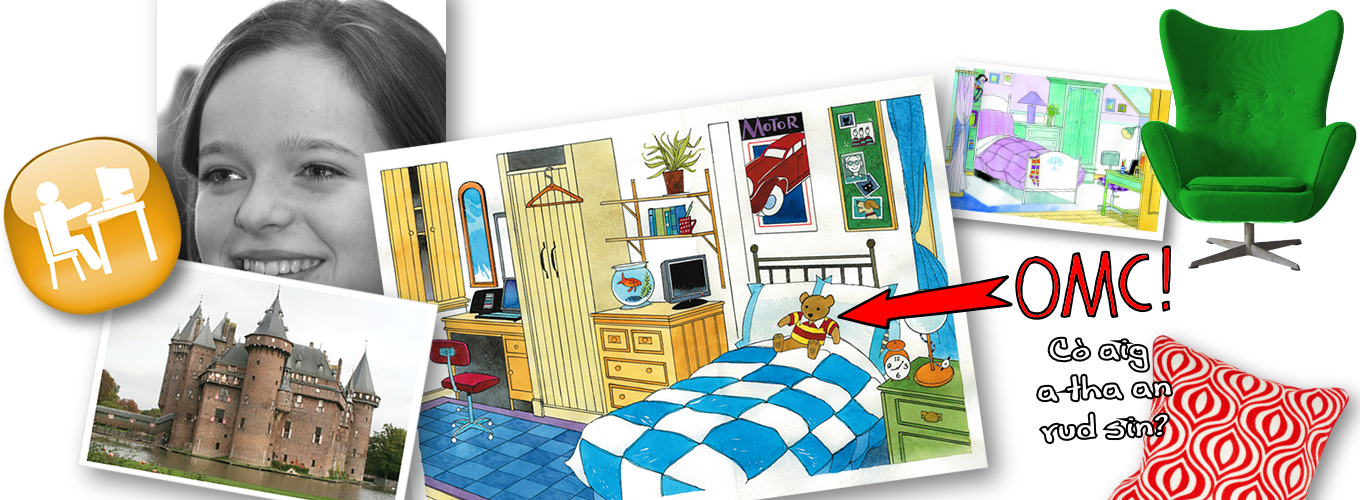Modal 3 Aonad 1
An taigh agam
Name some rooms/areas around the house, name some items of furniture, describe the position of things, describe your bedroom
Listening extracts for Aonad 1
An taigh-tughaidh

A traditional blackhouse or taigh-tughaidh was made with thick stone walls and a thatched roof.
It was warm and sturdy and able to stand up to the worst winter gales.
Most crofters built their own houses and the work could take from a few weeks to a year or more.
In most communities, neighbours helped each other build houses.
In those days, the majority of people in the Highlands and Islands could not afford to import materials and so they were limited to whatever was available around them.
They would collect the stones themselves and cut turf and reeds for the roof.
Most of the islands have few, if any, trees, and so sourcing wood for the roof rafters was a problem.
Crofters would scour the nearby shoreline for driftwood from shipwrecks to form the roof.
The main difference between a blackhouse and a modern house was that both people and animals lived in a blackhouse.
Having animals living under the same roof may seem odd nowadays, but there were advantages.
It made the house warmer, the precious animals were well protected and it meant fewer buildings were required.
Having the animals in the house didn’t mean sharing space at the dinner table with the sheep and chickens!
Phew! That’s a relief!
The people lived in one half of the house and the animals in the other.
Inside the blackhouse, there were four areas: cidsin/rùm-suidhe (a kitchen area/living room), rùm-cadail (a bedroom), bàthach (a byre where the animals lived) and a sabhal (a barn for storing grain and potatoes).
The peat fire on the floor in the middle of the living area was the centre of family life and was never allowed to go out.
It would be kept going day and night, winter and summer.
This was the one source of heat and the means with which to cook.
The house had no chimney. Instead, there was a small opening in the roof which let out some of the thick smoke from the fire.
The smoky atmosphere in the house might be considered unhealthy nowadays, but it also had many hidden benefits.
It killed bugs, stopped food from rotting and the blackened sooty thatch made an excellent natural fertiliser for the land.
Ceòl ‘s craic!
Music and companionship were very important.
No home was complete without a set of bagpipes, a fiddle or a jaw harp or tromb.
In the days before television, families had to depend entirely on their own resources for winter entertainment.
Friends and neighbours would visit or cèilidh with each other regularly to sing songs, tell stories and play music round the fire at night.

You can hear an example of some lively music including a jaw harp here
An rùm-cadail

There would be an old-fashioned box bed in the bedroom area. The mattress would be filled with heather or straw.
The sheets and blankets would all be handmade from wool and linen.
They would be made either by the woman of the house or by the village weaver. Round the bed, there would be a linen curtain.
Again, this would be handmade and could be dyed red with a certain type of lichen (moss) found on nearby rocks.
There wouldn’t be much furniture in the bedroom, maybe a small table, a chest for keeping the few clothes they would have had, a basin for washing, a mirror and a candle or lamp.



